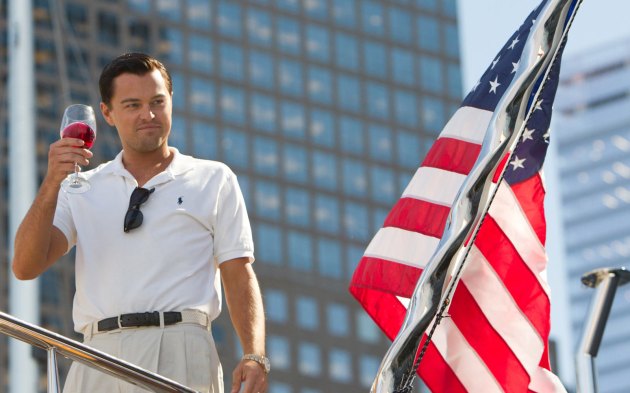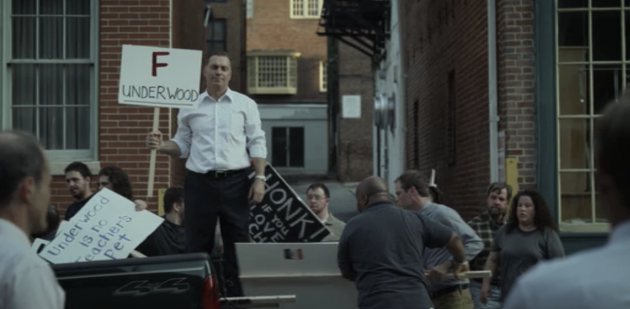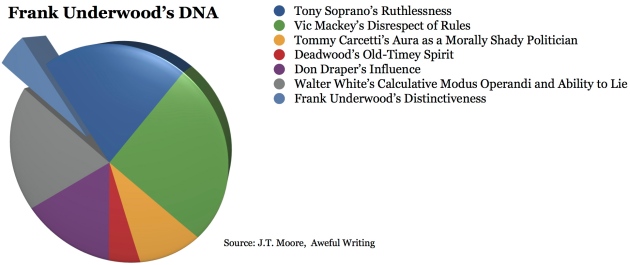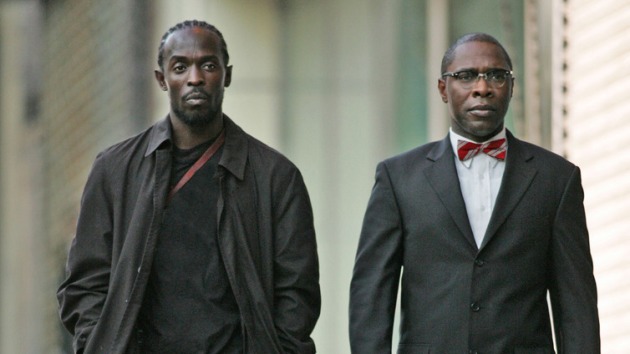
In The Look Back I will be looking at movies and television series/episodes with fairly recent anniversaries and writing about why I love them so. Basically it’s a desperate attempt to write about things that would normally have very little relevance at all.
Nine years ago today the nominations for the 57th Primetime Emmy Awards were announced. 2005 was a simpler time; Everybody Loves Raymond led the pack with 10 nominations, Angela Lansbury received her 18th nomination, and Desperate Housewives became the second series ever to earn 3 nominations in a lead acting category (the other series? Golden Girls, of course). But not every nomination announced was as standard as expected. A small HBO drama well into its third year earned its first Emmy nomination ever in the Outstanding Writing for a Drama Series category. The series was The Wire, and the episode was “Middle Ground.”
For some reason, “Middle Ground” was The Wire‘s first Emmy nomination ever. (The show would only come to earn one more nomination, for its series finale “–30–” again in Outstanding Writing for a Drama Series.) How is it that the most talked about series of its time took 3 years to earn an Emmy nomination? Well, because the voters who decide the Emmy nominations are a group of asinine dumbfucks. Regardless, “Middle Ground” has good reason for being The Wire‘s first Emmy nomination. It’s a brilliant hour of storytelling (as most episodes of The Wire are) and stands out from every other episode of The Wire‘s 5 year run. This is because “Middle Ground” is something all other episodes of The Wire are not: a stand-alone episode of television.
What makes “Middle Ground” a stand-alone episode is that all of the major stories of Season 3 start to come to a head. McNulty and co. have successfully sold the Barksdale crew tapped phones and are thisclose to catching Stringer Bell. Bunny has given a presentation revealing the existence of Hamsterdam and Rawls and Mayor Royce are scrambling in how to explain it before the story breaks. Cutty is nearing his redemptive end. And there’s Stinger and Avon, whose relationship is the heart of this episode. All of these stories are reaching their ends because “Middle Ground” is the penultimate episode of The Wire‘s 3rd season, but there’s something about the narrative propulsion that brings a unique energy to the episode.
Take “Middle Ground”‘s opening scene, for example, which is one of the greatest scenes in television history.
The scene is impeccably shot by episode director Joe Chappelle, whose blocking of the scene hearkens back to Sergio Leone westerns. But the scene works as well as it does not because of its incredible visual style, but because of the palpable energy that stems from a simple conversation between two characters, Omar and Brother Mouzone. (I’d love to show every Breaking Bad fan who thinks Gus Fring is the best television villain ever Brother Mouzone, who puts Fring to shame.) Every line crackles, and when watching the scene it feels like it’s the most thrilling thing you’ll ever see, even though it’s just two men talking to each other. Immediately, “Middle Ground” finds energy and propulsion by simply trusting its characters, which is something that carries on throughout the entire episode.
Another benchmark sequence in “Middle Ground” is the collection of scenes where Bunny shows off his precinct to Carcetti. The scenes are made up of, again, two men talking to each other, this time about the simplicities of daily life in Baltimore. Bunny’s precinct has turned into a “normal” neighborhood, something its residents haven’t been used to, and the sequence relishes in the beauty that comes from this newfound normalcy. One scene that particularly comes to mind is when Bunny and Carcetti attend a community meeting.
It’s a short scene that just features people talking, but the scene strikes a deeply emotional chord. It’s a meditation on human connection. The collection of these scenes between Bunny and Carcetti feel like if Richard Linklater’s Before trilogy was set in Baltimore, but that feeling comes to a crushing end once Carcetti reaches Hamsterdam. The close up of Carcetti’s face realizing what Hamsterdam is is a shattering moment in a series full of them, but that devastation could not be achieved without the beauty of the scenes that preceded it.
And speaking of devastation: Stringer and Avon. As mentioned before, Stringer and Avon’s relationship is the heart of “Middle Ground.” It’s been crumbling slowly, but in “Middle Ground” it reaches its breaking point. The last scene the two men share together is another hallmark one, as it is just Stringer and Avon reminiscing about where they’ve come from and where they stand now.
The scene is, again, filled with incredible dialogue, every line more loaded as the next. There’s “We ain’t gotta dream no more, man” the episode’s epigraph, and the ending line of “Us, motherfucker.” It’s one of the most rich and textured scenes of television I’ve ever seen in my life, and it’s only made possible by The Wire trusting its characters and believing in the small moments they’re able to produce.
And it’s made even more devastating by Stringer’s death. The act of killing off Stringer Bell is an incredibly shocking, ambitious, and devastating one (I’d also love to show every Game of Thrones fan who thinks that the show’s killing off of characters are the most ambitious in television history what The Wire did in 2004), but the most crushing thing about it is that it’s just a small moment in The Wire‘s gigantic universe. Sure, Stringer’s death causes serious complications for the Major Crimes Unit, but after the season finale The Wire just moves on.
Handling Stringer’s death in this way brings perspective and gravity to the episode and series as a whole in a way that is, in the macro, uncommon for The Wire. The series has been lauded continuously for its tactfulness in understanding why institutions fail us, and its sweeping weightiness when exhausting the subject. But for my money, The Wire is not recognized enough for its smaller moments and perspective. The most striking thing about the series is how it’s able to craft a gigantic and complex universe while still being able to deliver small and intimate character moments that feel just as weighty as its big picture ideas. This is readily apparent in “Middle Ground,” as the episode is built on small and unique character moments which bring perspective, and is ultimately why the episode works on its own. It’s what I love about The Wire, and it’s why “Middle Ground” is the series’ best episode.
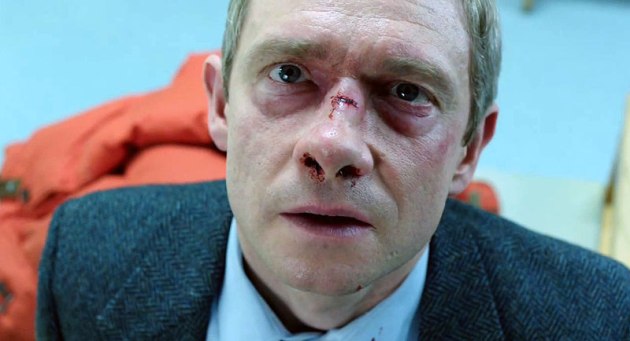






 Ever since The Sopranos premiered cable television has been the home of dark and grim stories. The word “dark” has been the defining trait of cable television for years now, and it’s usually been associated with those ever-present antihero shows. However, the darkest show on television is indeed on (basic) cable and features a male lead, but it’s actually, in the strictest sense, a comedy. I am speaking of Comedy Central’s new series Review starring Andy Daly, which has featured some of the darkest and saddest television to air in years.
Ever since The Sopranos premiered cable television has been the home of dark and grim stories. The word “dark” has been the defining trait of cable television for years now, and it’s usually been associated with those ever-present antihero shows. However, the darkest show on television is indeed on (basic) cable and features a male lead, but it’s actually, in the strictest sense, a comedy. I am speaking of Comedy Central’s new series Review starring Andy Daly, which has featured some of the darkest and saddest television to air in years.
